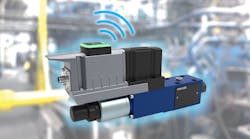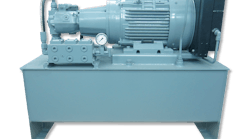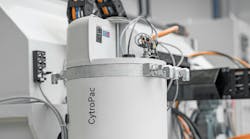Given that a series-connected electric dc motor and a pressure-compensated hydraulic motor have the same speed and torque ratings, they will both display essentially the same torque-speed characteristic curves. A generalized torque-speed curve applying to both motor types is shown in Fig. 1. The predictable reactions in the two motors reveal why that is possible.
Series-Connected DC Motor
The series-connected dc electric motor (Fig. 2) was introduced in a previous installment of “Motion Control.” At that time, it was explained as such:
“To understand the relationship between stator field magnetic flux and speed, recall that the motor will accelerate until the counter electromotive force (emf) equals (or nearly equals) the supply voltage: the battery voltage in the figure. When power is first applied, the motor shaft is not turning. Counter emf is nil, so the current jumps to a high value. The high current causes a large starting torque, so the motor accelerates. But as the motor accelerates, the counter emf increases, reducing the armature current, IA. The reduction in current is accompanied by a reduction in field flux. Thus, the motor now has to speed up more to generate a high counter emf, which causes a further reduction in flux, requiring yet more speed, and on and on.








